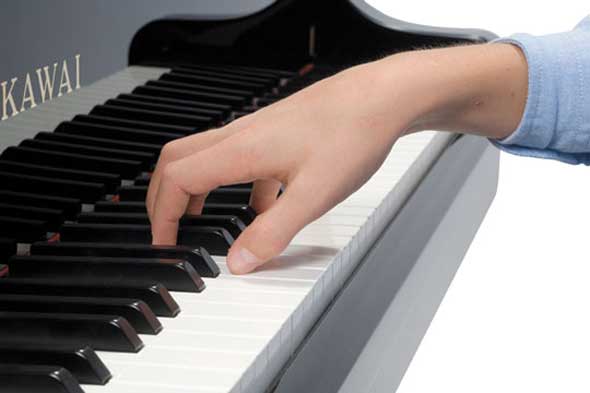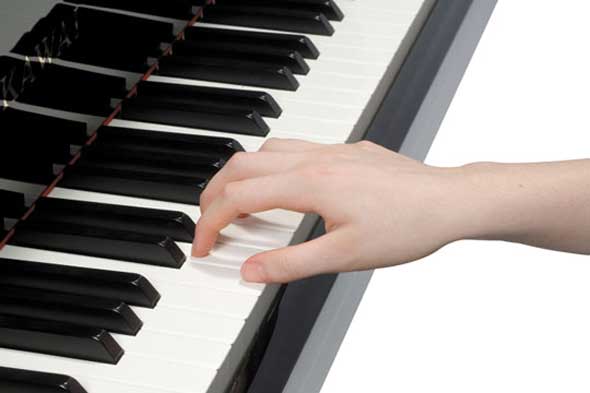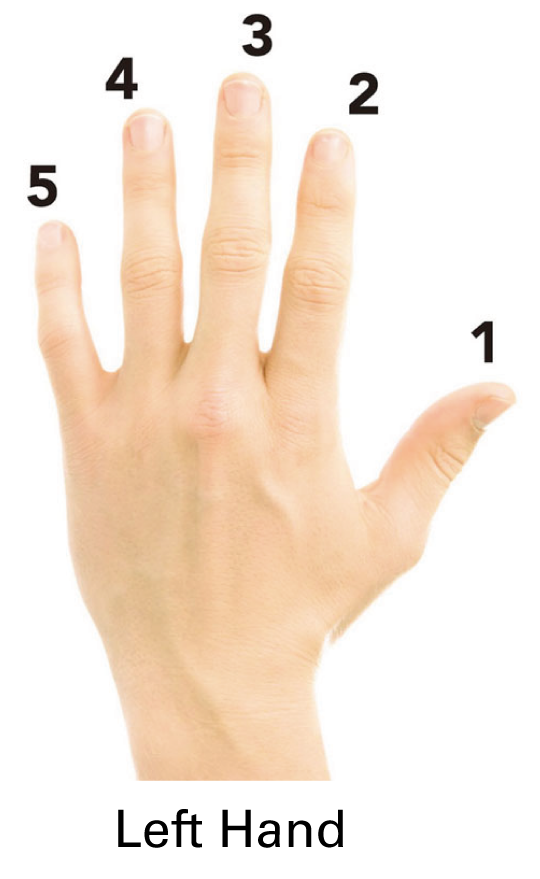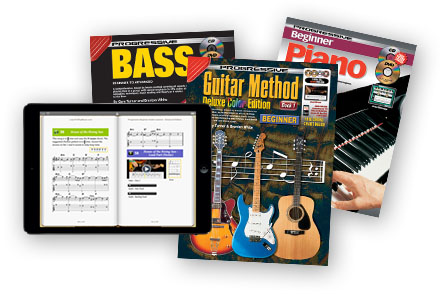<< First < Previous | Intro 1 2 3 4 5 | Next > Last >>
Back to Table of Contents
Progressive Beginner Piano Lessons – Enhanced Edition assumes you have no prior knowledge of music or playing the piano. This book will show you:
- How to play over 25 songs, across a range of two octaves.
- Major, Minor and Seventh chords.
- 12 Bar Blues and Turnaround progressions.
This book also features a chord chart section featuring over 50 different chords. After completing this book you will have a solid understanding of the piano and be ready for further study on specific styles of playing, e.g., Rock, Blues, etc. All piano players should know all of the information contained in this book. The best and fastest way to learn is to use this book in conjunction with:
- Buying sheet music and song books of your favorite recording artists and learning to play their songs.
- Practicing and playing with other musicians. You will be surprised how good a basic piano/drums/bass/guitar combination can sound even when playing easy music.
- Learning by listening to your favorite recordings.
Using The Enhanced Features
This enhanced eBook contains video and audio recordings for all exercises. The book explains where to put your fingers and what techniques to use, while the video and audio lets you see and hear how each example should look and sound when played correctly.
Practice the examples on your own, playing slowly at first. Then try playing to a metronome, set to a slow tempo, until you can play the example evenly and without stopping. Gradually increase the tempo as you become more confident and then you can try playing along with the recordings.
A purple bar with a play icon and an exercise number indicates a recorded example like this:
Each enhanced exercise includes:
Video
Video
Watch a close up of the example being played by a professional teacher so you can check your technique and hear how the example should sound when played correctly.
Click the play icon (triangle) to start the video playing and then click the full screen icon (2 arrows) to expand the video to fill the screen. A band is performing with the teacher so you can hear how the exercise sounds when played together with other instruments. Drag the slider to watch different parts of the exercise again. Please note that the video is best viewed in landscape orientation.
Solo Track
Audio – Solo Track
Listen to the example played by itself so you can focus on the part you are learning. Click the play icon (triangle) to start the audio playing. Drag the slider to hear different parts of the exercise again.
Backing Track
Audio – Backing Track
When you are comfortable playing the exercise, use this audio to practice playing along with the backing band by yourself. Click the play icon (triangle) to start the audio playing. Drag the slider to hear different parts of the exercise again. Adjust the volume of your instrument and the recording so that you can hear yourself and the band at the same time.
Full Page Score
For longer examples, the music score for the exercise is available as a single image for easy viewing. Double-tap the image to open it full screen and then use your fingers to swipe up and down or zoom in and out. Please note that you can have the audio playing and the full page score open at the same time.
Approach to Practice
It is important to have a correct approach to practice. You will benefit more from several short practices (e.g., 15-30 minutes per day) than one or two long sessions per week. This is especially so in the early stages, because of the basic nature of the material being studied.
In a practice session you should divide your time evenly between the study of new material and the revision of past work. It is a common mistake for semi-advanced students to practice only the pieces they can already play well. Although this is more enjoyable, it is not a very satisfactory method of practice. You should also try to correct mistakes and experiment with new ideas. It is the author’s belief that the guidance of an experienced teacher will be an invaluable aid in your progress.
These notes are known as the musical alphabet. They are the names of the white keys on the keyboard.
The black keys always appear in groups of two or three. The C note is a white key. It is always on the left hand side of a group of two black keys. Find all the C notes on your piano.
The first note you will learn to play is Middle C.
How to Read Music
These five lines are called the staff or stave.
Music notes are written in the spaces and on the lines of the staff.
High notes are written on the treble staff, and are usually played with your right hand. Low notes are written on the bass staff, and are usually played with your left hand.
The Grand Staff
When the treble and bass staves are joined together by a line and a bracket, they are called a grand staff. Piano music is written on the grand staff. Notes written on the treble clef are played on the right hand side of keyboard while notes written on the bass clef are played on the left hand side of the keyboard.
Music is divided into bars (sometimes called measures) by bar lines. In this example there are two bars of music.
These notes are known as the musical alphabet.
Piano music notes are written in the spaces and on the lines of the grand staff.
<< First < Previous | Intro 1 2 3 4 5 | Next > Last >>
Back to Table of Contents











































